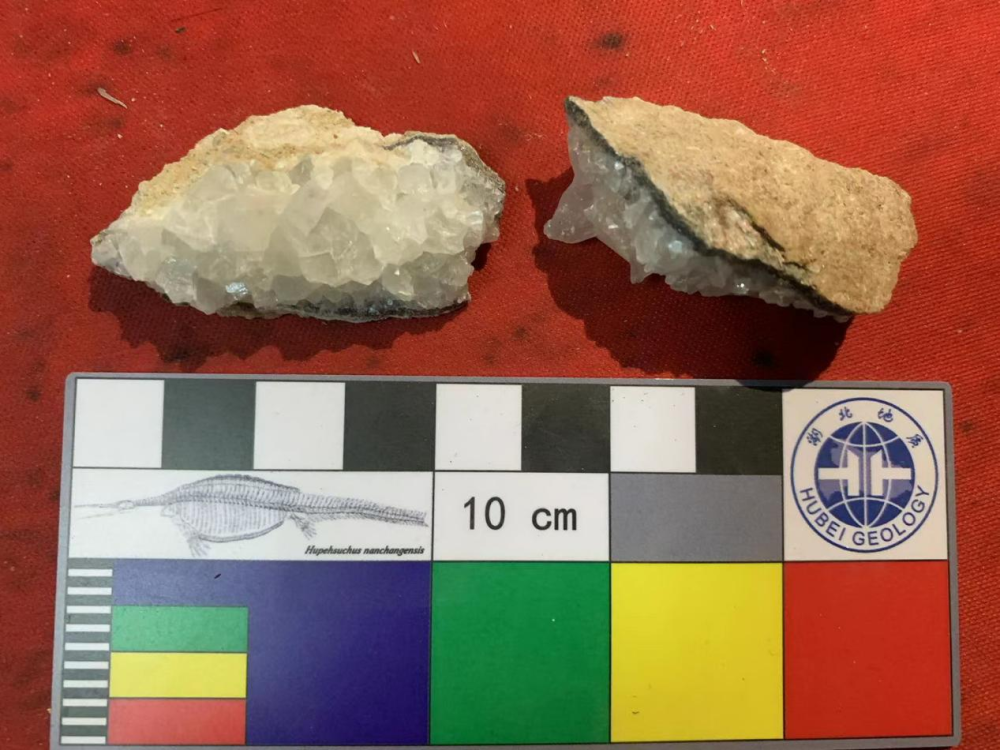What could be more exciting than finding a dinosaur egg? The tiny shells from which some of the largest animals ever to walk the Earth emerged, incredible stuff! Thing is, it’s not always easy to work out what you’re dealing with when all you have to study is the egg itself. In fact, it’s not even very easy to work out how old they are.
Now, that could all be about to change as a team of scientists have put forward a new method they describe as a kind of “atomic clock for fossils”. It uses uranium-lead (U-Pb) dating to analyze the calcite composition of dinosaur eggs, and the sequence of events that led to its development in this context was a lovely bit of serendipity.
A friend of mine who specializes in U-Pb dating of speleothems (such as stalagmites) saw these fossils and suggested, ‘Why not bring them to our lab and try U-Pb dating?’
Dr Bi Zhao
“In 2023, I was fortunate to discover several dinosaur egg fossils at Qinglongshan that were completely filled with large, well-formed calcite crystals,” said the study’s corresponding author Dr Bi Zhao of the Hubei Institute of Geosciences to IFLScience. “Shortly after, a friend of mine who specializes in U-Pb dating of speleothems (such as stalagmites) saw these fossils and suggested, ‘Why not bring them to our lab and try U-Pb dating?’”
The technique involves firing a micro-laser at your subject so that you vaporize the carbonate minerals into aerosol. The resulting vapor can then be put into a mass spectrometer to look for uranium atoms, which decay at a fixed rate, giving you a reliable way of dating it. Sound great, right? Except nobody had ever done it with an egg before.

Dinosaur egg fossil samples used for geochronological analysis.
Image credit: Dr Bi Zhao
“I looked into the literature and found no prior studies of this kind, so I was skeptical and asked, ‘Are you sure this will work?’,” said Zhao. “He was confident, and we decided to proceed.”
We were surprised to find that the calcite from the eggshell itself produced even more consistent and reliable U-Pb ages.
Dr Bi Zhao
“Initially, our goal was to determine the crystallization age of the large calcite crystals inside the eggs to establish the maximum burial age of the fossils. However, during the experiment, we were surprised to find that the calcite from the eggshell itself produced even more consistent and reliable U-Pb ages. We quickly shifted our focus and successfully obtained the results reported in our paper.”
The dating revealed the eggs were deposited around 85 million years ago during the Late Cretaceous period. It marked the first time eggs from the Qinglongshan site had ever been accurately dated, which is a big deal in the context of quite how many eggs have been found there (more on this shortly).
This new methodology is an improvement on previous attempts to date dinosaur egg fossils in that it uses samples directly from the fossil. Before now, we’ve typically sampled surrounding volcanic rock, ash layers, or minerals that formed around fossil eggs, instead of the eggs themselves.

As eggs go, they’re pretty damn beautiful.
Image credit: Dr Bi Zhao
It’s a reassuring approach now that we know it works, because the atomic clock for fossils suggests that the biogenic calcite of most dinosaur eggshells may retain their original crystallization age, meaning that this method could be applied to dinosaur egg fossil sites worldwide. What’s more, it could even be applicable to other types of fossils, which could fill in critical gaps in our geochronological knowledge. Fitting really, isn’t it? For a study about eggs to hold so much potential.
The Qinglongshan site in the Yunyang Basin is China’s first national dinosaur egg fossil reserve, where over 3,000 eggs have been found scattered across the landscape. They largely belong to a single species, Placoolithus tumiaolingensis, much of which has been studied by study co-author Dr Zhang Shukang. Every year, Shukang returns and collects around 100 new dinosaur eggshell samples for study, and word is there may be some exciting news on the horizon…
While we wait for what hopes to be some big egg news in the figurative sense, might I tempt you to explore big eggs more literally?
The study is published in the journal Frontiers in Earth Science.
Source Link: 85-Million-Year-Old Dinosaur Eggs Dated Using “Atomic Clock For Fossils” For The First Time